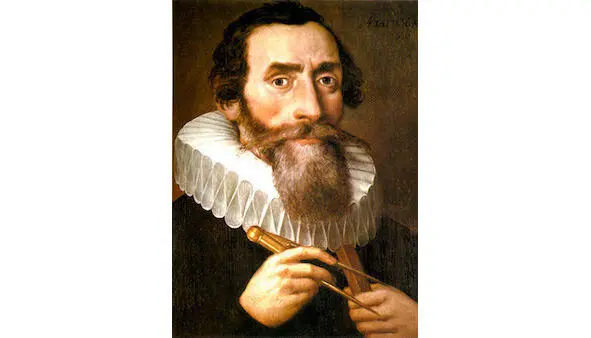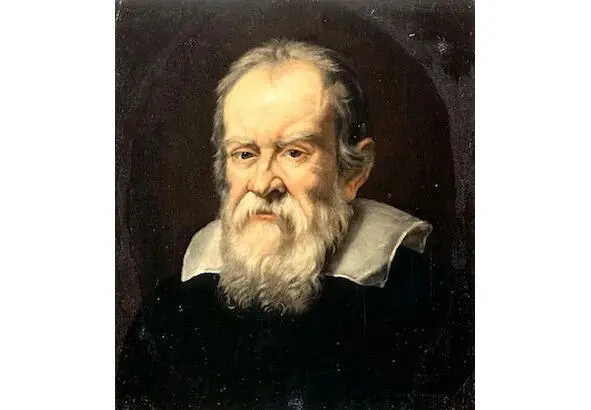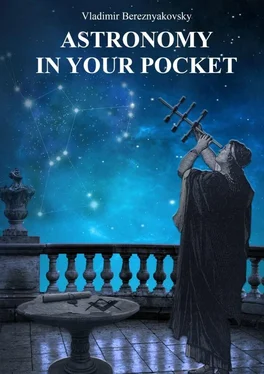Vladimir Bereznyakovsky - Astronomy in your pocket
Здесь есть возможность читать онлайн «Vladimir Bereznyakovsky - Astronomy in your pocket» — ознакомительный отрывок электронной книги совершенно бесплатно, а после прочтения отрывка купить полную версию. В некоторых случаях можно слушать аудио, скачать через торрент в формате fb2 и присутствует краткое содержание. ISBN: , Жанр: Прочая детская литература, Прочая научная литература, Физика, на английском языке. Описание произведения, (предисловие) а так же отзывы посетителей доступны на портале библиотеки ЛибКат.
- Название:Astronomy in your pocket
- Автор:
- Жанр:
- Год:неизвестен
- ISBN:9785005105240
- Рейтинг книги:4 / 5. Голосов: 1
-
Избранное:Добавить в избранное
- Отзывы:
-
Ваша оценка:
- 80
- 1
- 2
- 3
- 4
- 5
Astronomy in your pocket: краткое содержание, описание и аннотация
Предлагаем к чтению аннотацию, описание, краткое содержание или предисловие (зависит от того, что написал сам автор книги «Astronomy in your pocket»). Если вы не нашли необходимую информацию о книге — напишите в комментариях, мы постараемся отыскать её.
Astronomy in your pocket — читать онлайн ознакомительный отрывок
Ниже представлен текст книги, разбитый по страницам. Система сохранения места последней прочитанной страницы, позволяет с удобством читать онлайн бесплатно книгу «Astronomy in your pocket», без необходимости каждый раз заново искать на чём Вы остановились. Поставьте закладку, и сможете в любой момент перейти на страницу, на которой закончили чтение.
Интервал:
Закладка:
JOHANN KEPLER

Johann Kepler was born in the German state of Stuttgart on December 27, 1571 in a poor Protestant family. At the age of six in 1577 Kepler first saw a comet, the same comet was observed and described by the Danish astronomer Tycho Brahe. In 1589 Kepler graduated from the school at the Maulbronn monastery, and for his outstanding abilities in almost all Sciences, the city authorities awarded him a scholarship to help him further his studies, but Johann was very sickly, ailments followed him all his life.
At the end of the XVI century in many cities of Europe, there was an open confrontation between groups of people who had different ideas about the structure of the Universe. And in 1600, both exiles – Kepler and Brahe – met in Prague, but it soon became clear that the way Kepler represented astronomy, Tycho Brahe shared only partially. To preserve the already relatively outdated model of the universe, according to which the Central position in the Universe is occupied by the stationary Earth, Brahe proposed a compromise model: all the planets, except the Earth, rotate around the Sun, and the Sun rotates around the stationary Earth (geo-heliocentric system of the world).
The three laws of planetary motion formed by Kepler gave answers to many questions related to the shape of the orbit and the speed of the planets.
Kepler’s first law (the law of ellipses): “Every planet’s orbit is an ellipse with the Sun at a focus.”
Kepler’s second law (law of squares): “Each planet moves in a plane passing through the center of the Sun, and for equal periods of time, the radius vector connecting the Sun and the planet covers equal areas.” In simple words, the Sun is not in the center of the ellipse that the planets move along, so the closer the planet is to the sun, the faster it moves in its orbit. For example, the speed of the Earth as it orbits the Sun changes every six months by about 4,000 km/h.
Kepler’s third law (harmonic law): “The Squares of the periods of the planets’ rotation around the Sun are referred to as cubes of the large semi-axes of the planets’ orbits”. In other words, when a planet approaches the Sun, the radius (half – axis) of its orbit decreases, but the speed, and therefore the time of movement (period) – increases.
Only in 1609, with great agony, Kepler managed to publish his works, in which the scientist explained not only the new astronomy and physics of the sky, but also for the first time found out what is the cause of ocean tides. Kepler absolutely proved that the Moon is the cause of tides. It was also Kepler who introduced the term “inertia” into physics as the innate property of bodies to resist an applied external force, forming in a clear form the first law of mechanics: “Any body that is not affected by other bodies is at rest or performs a uniform rectilinear motion.”
The works of Johannes Kepler on optical phenomena can be considered the beginning of optics as a science. In his works, he outlined geometric and physiological optics, described the General theory of lenses, light refraction, refraction, and the concept of an optical image. Kepler also discovered the role of the human lens for the first time, describing the causes of myopia and farsightedness, and an in-depth study of optical laws led Kepler to the scheme of a telescopic telescope (Kepler telescope).
Craters on the moon and Mars, a supernova, an orbiting Observatory, and a spacecraft were named in memory of the great scientist.
GALILEO GALILEI

Galileo was born in 1564 in Pisa and belonged to a ruined Florentine family. From an early age, the boy was attracted to art; all his life he was interested in music and drawing – he mastered them perfectly. In 1581, 17-year-old Galileo, at the insistence of his father, entered the University of Pisa to study medicine, but was passionately interested in geometry, and in 1592, Galileo received a place at the prestigious and rich University of Padua, where he taught astronomy, mechanics and mathematics. After learning about the invention of the telescope in Holland, Galileo decided to build his own telescope. In 1609. he assembled the first telescope and pointed it at the sky. Soon he was able to build a telescope that gives a magnification of 32 times. It is also important to note that the term “telescope” was introduced into science by Galileo. Using the telescope, which became the main instrument of all astronomers, Galileo Galilei saw the surface of the moon and discovered mountains and craters on the moon, and the milky Way broke up into separate clusters of stars. But even more surprisingly, Galileo was able to see as many as four moons of Jupiter. In Florence, Galileo continued his scientific research, discovering the phases of Venus, spots on the Sun, and then the rotation of the Sun around its axis.
Galileo was a very versatile man, who invented hydraulic scales, studied probability theory, created a prototype microscope with which he studied insects; also worked on the theory of color and magnetism, the resistance of materials, optics and acoustics. He was the first to experimentally measure the density of air. Galileo was a gifted writer and philosopher, and he was certainly the founder of both experimental and theoretical physics, and even Einstein called Galileo “the father of modern science”. He can be considered one of the founders of mechanism, because it is the analysis of mechanical movement that underlies his work. This scientific approach considers the Universe as a large mechanism, and complex natural processes as combinations of the simplest causes, the main of which is mechanical movement.
As you know, Galileo studied inertia and free fall, and in his last book formulated the laws of fall: “The speed increases in proportion to time, and the path increases in proportion to the square of time.” This contradicted the famous statements of Aristotle that the speed of falling is greater the greater the weight of the body. However, with the Catholic Church, things did not go so smoothly for Galileo. The fact is that the absolute majority of his works contained a variety of different statements and hypotheses that completely contradicted Aristotle, namely, the works of Aristotle built the medieval worldview. Seeing the obvious refutations of the geocentric system of the world and its fallacy, he decides to fight for the truth with the Catholic Church. His books violated the prohibition on promoting the “Pythagorean” doctrine, and Galileo was faced with a choice: either he would repent and renounce his “errors”, or he would suffer the fate of Giordano Bruno. Galileo confirmed that he agreed to recite the required recantation, and then was sentenced to prison. He spent the rest of his life under house arrest and the constant supervision of inquisitors. Galileo Galilei died on January 8, 1642, at the age of 78, in his bed. Pope Urban forbade the burial of Galileo in the family crypt in Florence. The greatest scientist of the middle Ages was buried without honors, and the head of the Catholic Church also did not allow to erect a monument. Officially, the Vatican rehabilitated Galileo Galilei only in 1992.
Among the most famous students of Galileo are Torricelli, who became a physicist and inventor, Castelli, the Creator of hydrometry, and Borelli, the founder of biomechanics. Craters, satellites, asteroids, and a NASA space probe were named in memory of the great scientist of the middle Ages.
Читать дальшеИнтервал:
Закладка:
Похожие книги на «Astronomy in your pocket»
Представляем Вашему вниманию похожие книги на «Astronomy in your pocket» списком для выбора. Мы отобрали схожую по названию и смыслу литературу в надежде предоставить читателям больше вариантов отыскать новые, интересные, ещё непрочитанные произведения.
Обсуждение, отзывы о книге «Astronomy in your pocket» и просто собственные мнения читателей. Оставьте ваши комментарии, напишите, что Вы думаете о произведении, его смысле или главных героях. Укажите что конкретно понравилось, а что нет, и почему Вы так считаете.












